The historic $93 million+ investment will expand vital addiction services, change Oregon’s recovery landscape
Portland, OR – The Measure 110 Oversight & Accountability Council has approved all Measure 110 funds for Tri-County area Behavioral Health Resource Networks (BHRNs). The funding breakdown is as follows:
- Clackamas: $14,472,176.60
- Multnomah: $58,859,724.17
- Washington: $20,529,702.14
- Total: $93,861,602.91
These networks will increase access to a full array of low-barrier addiction treatment services. Rather than being met with waiting lists and other barriers to care, more Oregonians will be able to access care, including:
- Behavioral Health Treatment that is evidence-based, trauma-informed, culturally specific, linguistically accessible, and patient-centered;
- Peer support and recovery services designed to help people continue to address their substance use;
- Harm reduction interventions including overdose prevention, access to naloxone, drug education and outreach; and
- Housing – stable and safe transitional, supportive, and permanent
See the full list of awardees and the services they will provide.
See examples of Tri-County BHRN organizations and how M110 is expanding their services.
“Measure 110 is changing the addiction recovery treatment service landscape so that regardless of the path, critical supportive services will be more readily available closer to home.” said Tera Hurst of the Health Justice Recovery Alliance, the advocacy coalition focused on successful implementation of the law. “These dollars address the tremendous need for more services. We’ll see the difference in our communities as this real help and support becomes increasingly available.”
Measure 110 grantee and Executive Director of Bridges to Change, Monta Knudson, lauded the news, noting that this funding “signifies that we’re finally on track when it comes to supporting Oregonians struggling with substance use.” Knudson further noted that “transformational, systemic change like this takes time. We didn’t dis-invest in these services overnight; it took decades to get here. And even with the huge infusion of resources from Measure 110, it’s going to take time for these organizations to fully meet the needs of the community.”
Oregon has ranked last in access to services for many years. Measure 110 is a first-of-its-kind law not only in that it decriminalized possession of small amounts of drugs, but also in that it provides one of the first steady streams of funding that addiction service providers can count on. While the program will take several years to be fully implemented, experts say that Measure 110 will change the recovery landscape as we know it in Oregon, enabling providers to offer more support and services than ever before.
Such services come at a time when they are immensely needed. Measure 110 was created in response to the state’s lack of addiction services, and to address the suffering we’re seeing on our streets every day. “Oregon was already in an addiction crisis, and the COVID-19 pandemic just exacerbated that even more,” says Haven Wheelock, public health expert and overdose prevention specialist. “So many more people need help now amid the continued struggle and isolation of the pandemic.”
Early COVID-19 social distancing requirements forced many providers to decrease the number of beds available for clients, or to temporarily shutter operations. These restrictions, combined with the fact that Oregon already ranked last in access to services nationwide, created a tragic reality for Oregonians struggling with substance use, though it is important to note that Oregon’s overdose rate remains lower than the West Coast average where drugs have not been decriminalized. Data from the CDC’s National Center for Health Statistics indicate that there were more than 100,000 drug overdose deaths in the United States during the 12-month period ending in April 2021, an increase of 28.5% from the year before. Nearly 40% more Oregonians died of drug overdoses in 2020 than 2019, and the recent surge in nationwide overdose deaths has hit Black men the hardest.
Oregonians overwhelmingly approved Measure 110 by a 17-point margin with support from counties large and small, urban and rural, progressive and conservative. The law removes criminal penalties for minor, nonviolent drug offenses in favor of a health-based and science-backed approach to substance use, recognizing that drug users are not criminals but our family members, friends, and neighbors. Over the next 18 months, Measure 110 will dedicate a total of $302 million toward making addiction services more accessible across the state. Already the law has averted thousands of arrests and helped more than 16,000 people access lifesaving services, thanks to the early release of $30 million in Measure 110 funds last year. Approved funding will be awarded to 240 service providers in all 36 Counties, with the bulk of that funding going to the Tri-County area, home to the communities most harmed by the war on drugs and where the population is highest. Across the state, Measure 110 will fund:
- 111 entities that provide screening and comprehensive behavioral health needs;
- 112 entities that provide individual intervention planning;
- 113 entities that provide low-barrier substance use treatment;
- 172 entities that provide peer support and mentoring;
- 88 entities that provide housing services;
- 84 entities that provide harm reduction services; and
- 51 entities that provide employment support.
The Health Justice Recovery Alliance (HJRA) worked closely with the legislature, the Oregon Health Authority, the Measure 110 Oversight & Accountability Council and other key stakeholders to secure this historic investment.
Julia Mines, Executive Director of the Miracles Club in NE Portland and a member of the Washington and Multnomah County BHRNS, “lived through the war on drugs and saw what it did to the African American community in Portland.” She remembers what it was like 25 years ago — “being homeless, feeling helpless, devastated…not knowing where to turn. Measure 110 changes that. It creates hope for my community.”
